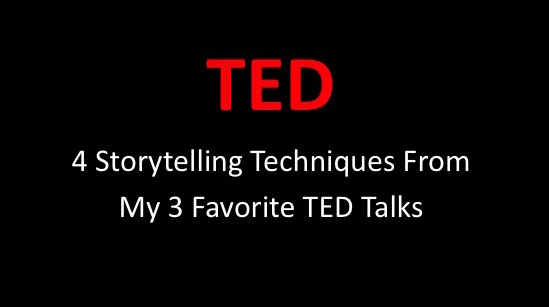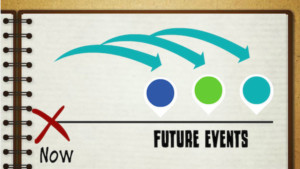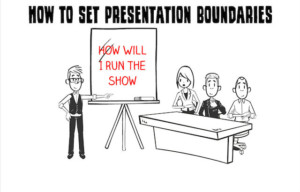Once upon a time, a simple story changed the trajectory of my career.
A simple story can have a significant impact on you and your audience as well. That’s why I invested a lot of time in this blog which will share with you detailed and practical storytelling techniques.
Here is How a Story Changed the Trajectory of My Life and Career:
17 years ago, I was a Biochemistry student at a junior college. I chose my major because I loved chemistry and biology and thought Biochemistry combined both. I was not attached to the major and did not know what I would do after college.
One day, while in chemistry class, Dr. Fisher told us a story that made me change my major that day.
Dr. Fisher told us a story about a nearby power plant. The chemical plant was going through a meltdown, and an explosion was imminent. The explosion would have killed everyone in the plant and devastated the whole community around it.
The person who saved the plant and the day was a young chemical engineer. The engineer was sharp and quick on his feet. He noticed the problem before it reached critical mass and defused the situation before anyone got hurt.
Dr. Fisher raved about this young Chemical engineer and how he deserved to be “paid the big bucks.”
I was on the edge of my seat, riveted while the professor told his story. I still remember it like it happened yesterday.
After class, I rushed to the counseling center and changed my major to Chemical Engineering. That’s the degree in which I finished college. Sure, this is not my current career, that’s another story (which I will share at another time because it changed my trajectory again).
The Reasons Why Storytelling Will Turn You Into A Fascinating Speaker
[embedyt] http://www.youtube.com/watch?v=q1a7tiA1Qzo&width=669&height=406¢ervid=1[/embedyt]
Clip Length: 5.5 minutes
“Stories are powerful because they transport us into other people’s worlds but, in doing that, they change the way our brains work and potentially change our brain chemistry — and that’s what it means to be a social creature.” Paul Zak.
If you were ever spellbound by a good novel or a TV show, then you know the power of story.
Research indicates that a good story can influence your neurochemistry and ultimately affect your behavior. That’s why storytelling has been one of the best influence and persuasion tools of leaders around the world.
In this short film on the power of storytelling, you will learn why stories generate empathy, change your neurochemistry, and influence you to change your behavior. This video is based on the research of Dr. Paul Zak, Neuroeconomist, and Author of Moral Molecule.
Storytelling is a powerful tool. It’s a tool that can be learned and applied. And what better place to learn it than the most inspiring TED talks.
Two Storytelling Techniques from Brené Brown’s TED Talk
1. Use the story as a hook technique:
[embedyt] http://www.youtube.com/watch?v=iCvmsMzlF7o&end=92&width=669&height=406¢ervid=1[/embedyt]
A Selected Clip Length: Only 1 minute
Within every head, there are two brains. The left is the analytical and extremely stubborn mind. The right is the creative and extremely flexible mind. If you want to have a better chance of connecting with people and influencing them, then you want to enter people’s brains from the right side. Otherwise, you will face unnecessary resistance.
The right brain is accessed mainly through stories. That’s why Brené Brown started with a story in her TED talk “The power of vulnerability.” It hooks the audience and spellbinds them from the outset.
2. Use the Dialogue technique.
A narrative without dialogue is dull. As humans. We crave the drama of other people interacting. That explains why live TV shows like the Kardashians are so popular. Live TV shows leverage our wired response to dialogue.
Here a section of dialog from Brené Brown’s talk:
“So, I’ll start with this: a couple of years ago, an event planner called me because I was going to do a speaking event. And she called, and she said, “I’m struggling with how to write about you on the little flyer.” And I thought, “Well, what’s the struggle?” And she said, “Well, I saw you speak, and I’m going to call you a researcher, I think, but I’m afraid if I call you a researcher, no one will come because they’ll think you’re boring and irrelevant.”
One Storytelling Technique from Simon Sinek’s TED Talk
1. Use The Comparative Historical Stories technique
[embedyt] http://www.youtube.com/watch?v=u4ZoJKF_VuA&start=530&end=661&width=669&height=531¢ervid=1[/embedyt]
A Selected Clip Length: Only 2 minutes
The Wall Street Journal pioneered this technique to sell billions in subscriptions. In copywriting, this technique is called the twin brother stories. This is where you compare two people who were working on the same thing, but one of them succeeded. Then you point out that the reason one achieved, and the other did not, is due to the use of your product or idea.
In his Ted Talk, Simon Sinek compares Samuel Pierpont Langley, with the Wright brothers. How they were working on the same project of getting a plane to fly. The Wright brothers made it, but Langley did not. Sinek the point is that the Wright brothers had a “why” but Langley did not. Watch the video clip below to see it done.
One Storytelling Technique from Amy Cuddy’s TED Talk
1. Use the Storifying technique:
[embedyt] http://www.youtube.com/watch?v=Ks-_Mh1QhMc&start=626&end=746&width=669&height=406¢ervid=1[/embedyt]
A Selected Clip Length: Only 1 minute
In the power of body language TED talk by Amy Cuddy, she takes research and turns it into a story. By doing that, she makes it easier for you to understand, relate to, and engage with. Unlike reading out loud from the scientific journal or abstract, crafting the research as a story makes the content approachable.
“So this is what happens. They come in, they spit into a vial, for two minutes, we say, “you need to do this or this.” They don’t look at pictures of the poses. We don’t want to prime them with a concept of power. We want them to be feeling the power. So, for two minutes they do this. We then ask them, “How powerful do you feel?” on a series of items, and then we give them an opportunity to gamble, and then we take another saliva sample. That’s it. That’s the whole experiment..”
Notice that she described the experiment in an easy way. No jargon, no statistical analysis; just straightforward storytelling.
Conclusion
A simple story can have a significant impact your audience. Knowing how to tell your stories will make you more impactful, memorable and persuasive among your peers. The good news is that you don’t have to re-invent the wheel, there are plenty of good storytellers out there, and you can learn from them and copy their storytelling techniques.
PS. I love to see your comments below and respond to them.


